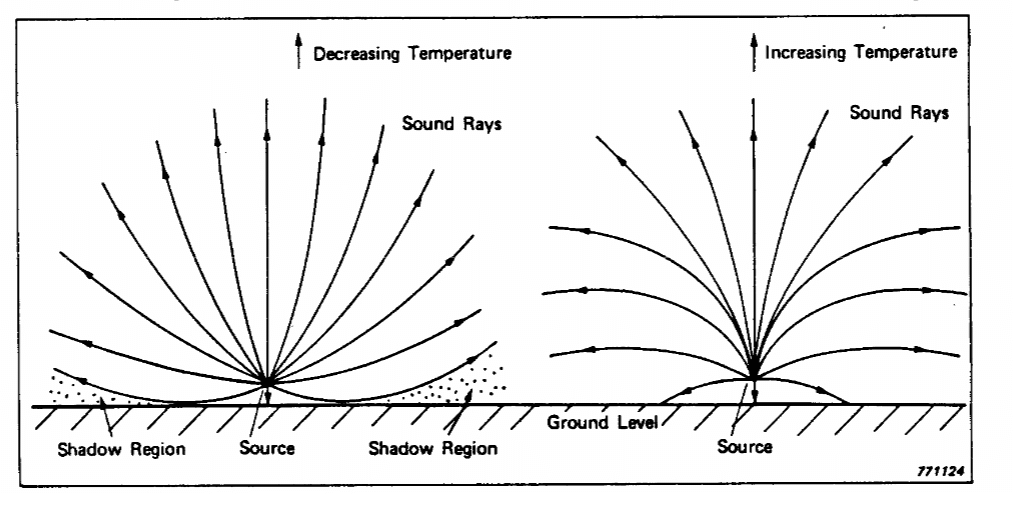Sound Reasons
1. Those who spend time outdoors have likely noticed that sounds can be heard at greater distances downwind from their source. And "shouting into the wind" is an idiom for futile attempts to communicate. Why does the wind affect how far away one can hear sounds?2. Under some weather conditions distant sounds, even on a windless day, seem to be heard at greater distances. When I was a child I remember standing waiting for the school bus at the end of a long country lane in Iowa. On a cold, sunny morning after a fresh winter snow, distant sounds of dogs barking, and other farm animal sounds, could be clearly heard that wouldn't be heard as well on a summer day. Why?
These days one can find answers to such questions on the internet. But I hope you wouldn't think of looking there before you puzzle them out yourself. In this case, many of the answers on the internet are simply wrong, but correct treatments can be found with a bit of effort.
Answers
1. Wrong answers often say something like this: "The sound downwind travels faster than upwind, so it travels farther downwind." This confuses speed and intensity. It doesn't matter how quickly a sound reaches the listener, but how intense it is when it is heard.But air speed does play a role. Wind speed is slower near the ground, due to viscous drag. Therefore the downwind wave fronts are refracted, and sound that would normally travel upward at an angle is refracted back downward toward the earth, increasing the sound intensity heard there. Sound traveling upwind is refracted upward, away from the ground.
 |
| Wind right to left. Wind speed increases with height. |
|---|
2. Normally the ground is warmer than the air above, so air temperature decreases with height in the troposphere (up to about 8 miles). Sound travels faster in warmer air, so the sound waves are refracted upward, away from the ground.
Various atmospheric conditions can cause a temperature inversion, with air temperature increasing with height. This causes some of the sound energy from a source near the ground to be refracted back toward the ground. Sounds are then heard at greater distances across a landscape. This is most likely in the dawn hours, more so in the winter (when the ground is cold) than in the summer.
Other conditions can affect sound propagation near the earth. Over short distances smooth water surfaces and snow or ice covered surfaces can reflect sound back upward. Rough surfaces and vegetation would absorb that sound. But for the large distances implied in this puzzle, the sound energy reaching the nearby ground wouldn't have reached the listener anyway. In some cases sound can be reflected upward at a shallow angle from reflective surfaces, and then refracted downward again, reinforcing the sound at greater distances.
 |
| Left: The usual situation with no wind. Temperature decreases with height. Right: Temperature increases with height. |
|---|
A good treatment can be found in the Handbook for Acoustic Ecology, Barry Truax, editor. Another informative site, with animations: Acoustics and Vibration Animations, by Dr. Daniel A. Russell, Graduate Program in Acoustics, The Pennsylvania State University. Also see chapter 30, "Noise in the Environment" in The Science of Sound, Second edition by Thomas D. Rossing, Addison Wesley, 1990.
The illustrations are from Chapter 10, "Outdoor Sound Propagation" in Noise Control by John Lamoncusa, used here by permission.
Return to Physics puzzles.
Return to the Donald Simanek's home page.